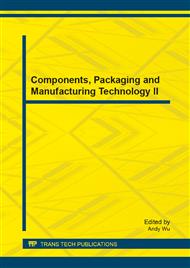p.27
p.34
p.38
p.44
p.47
p.50
p.56
p.63
p.70
Dragon Boat Technology on the Influence of Fluid Mechanics Research
Abstract:
In order to speed as the standard, the system classification and discriminant analysis method will be dragon boat every single layered, correlation analysis and linear regression on all levels Chinese excellence in the dragon boat paddle frequency and short distance, and explore its effect on the speed of a ship. Research shows that,at each level of the individual within the group of excellent domestic dragon boat paddle frequency andstroke distance are highly negative correlation; pitch frequency per minute increase a paddle, stroke distance (in terms of speed levels from bottom to top) decreased by 0.032 m, 0.032 m, 0.014 m respectively, 0.024 m, 0.017 m; and vice versa. At each level of a single group, in addition to the lower single group of oar frequency changes with the inverted "U" shape change, the other levels are "U" shape change in the variable range, all levels of individual group differences exist between the speed. The two variable changes within a certain range to improve the speed, and there exists a critical value, the speed can vary inversely according to critical value. Rowing technique diagnosis of dragon boat athletes excellent regression equations suggested that application of different single group of oar frequency and stroke length, pitch frequency and speed, and distance per stroke and with improved rowing technique training with the stroke frequency of the ideal, and finally to improve the speed of.
Info:
Periodical:
Pages:
47-49
Citation:
Online since:
February 2014
Keywords:
Price:
Сopyright:
© 2014 Trans Tech Publications Ltd. All Rights Reserved
Share:
Citation:


